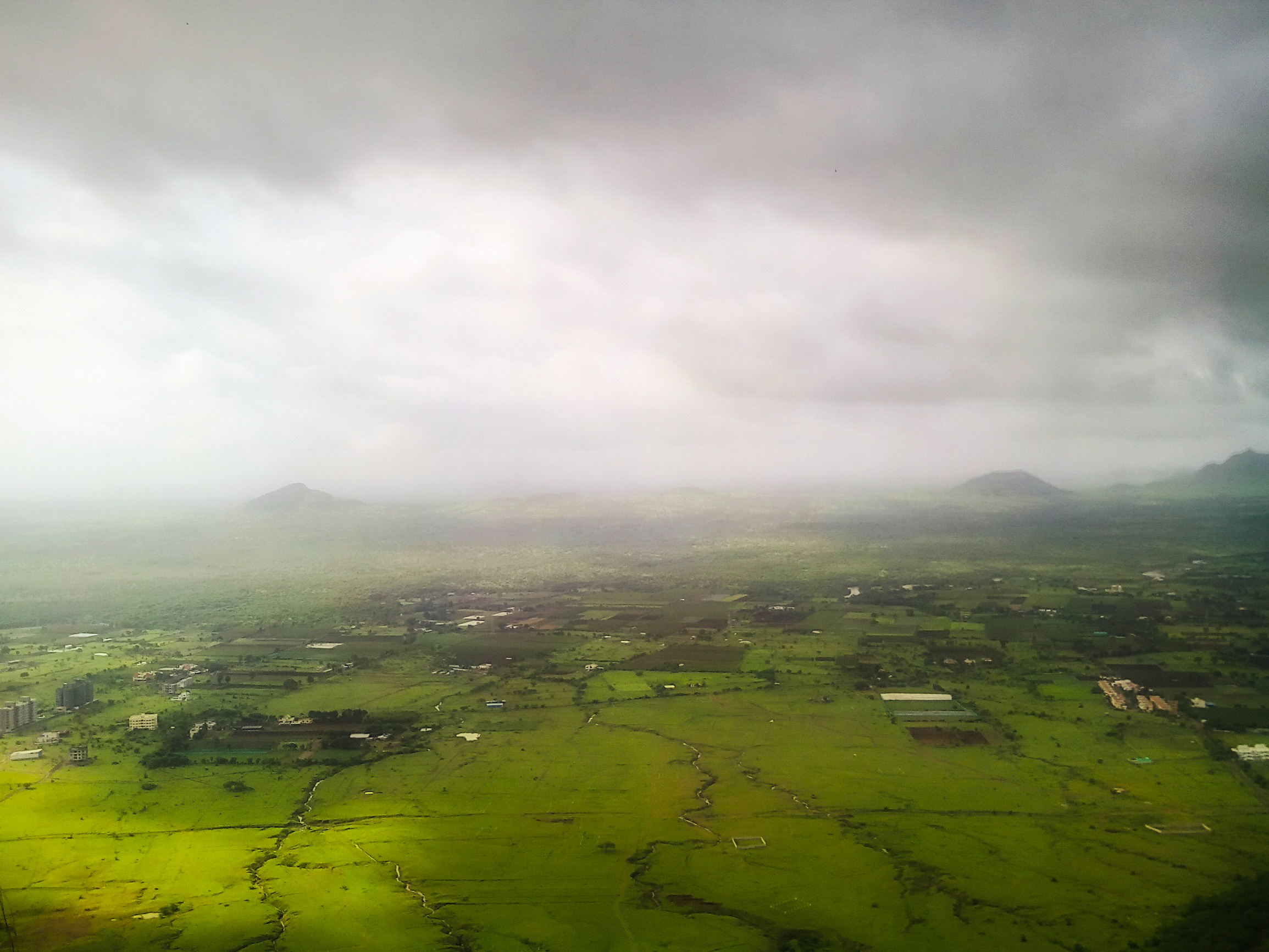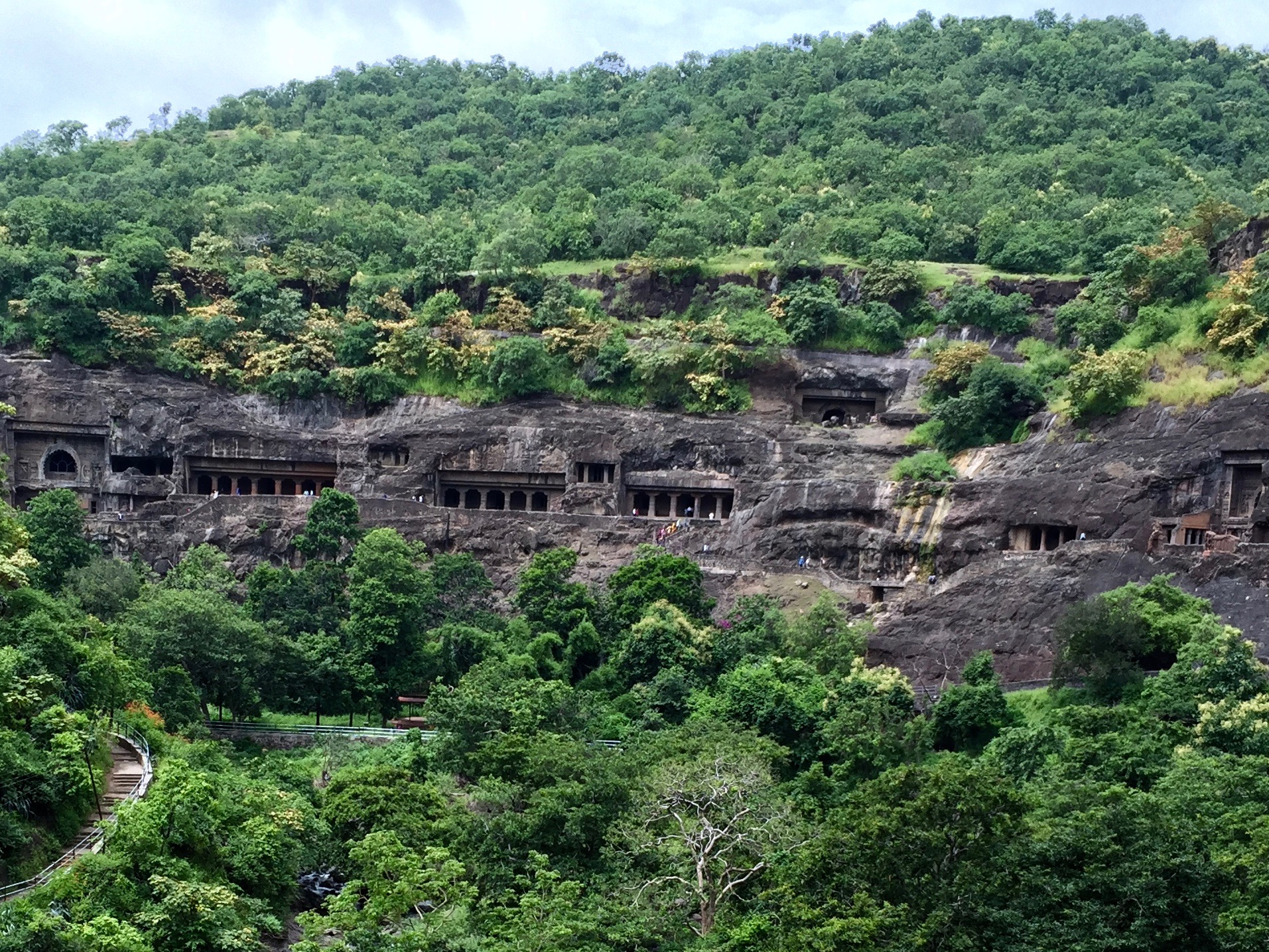|
Tulja Leni
Tulja Caves (Tulja Lena) are located beyond the Shivneri hill, about 4km to the west of Junnar, India. Other caves surrounding the city of Junnar are: Manmodi Caves, Shivneri Caves and Lenyadri caves. The cave has circular Chaitya hall surrounded by twelve octagonal pillars around Stupa. These caves are one of the earliest caves of Junnar, excavated around 50 B.C. This Buddhist cave group consist of 11 cave. Cave No 4 is used as a temple of goddess Tulja Devi. Description The Tulja Lena caves lie in a hill about a mile and a half or two miles north-west from Junnar, beyond the north end of Sivaneri hill. They owe their name to a shrine of Tulja Devi, a form of Bhavani, the consort of Shiva (see Tulja Bhavani Temple). The caves run along the face of the cliff nearly from south-east to north-west, facing about south-west, but all the façades have fallen away. They consist of a number of cells and two small viharas, with a Chaitya cave of a form quite unique. It is circular ... [...More Info...] [...Related Items...] OR: [Wikipedia] [Google] [Baidu] |
Junnar
Junnar (Marathi pronunciation: ͡ʒunːəɾ is a city in the Pune district of the Indian state of Maharashtra. The city has history dating back to the first millennium. The nearby fort of Shivneri was the birthplace of Maratha king Chatrapati Shivaji Maharaj, the founder of the Maratha Empire. Junnar was declared the first tourism taluka in Pune district by the government of Maharashtra on 9 January 2018. History Junnar has been an important trading and political centre for the last two millennia. The town is on the trade route that links the ports of western India or more specifically of Konkan with Deccan interiors. The first mention of Junnar comes the Greco-Roman travellers from the first millennium, The Indo-Scythian Western Satraps ruled at Junnar during the 2nd century CE as shown by their cave inscriptions in the area of Junnar, at Manmodi Caves. "Yavana" Greeks also left donative inscriptions in the 2nd century CE at Lenyadri and Manmodi Caves. According to Da ... [...More Info...] [...Related Items...] OR: [Wikipedia] [Google] [Baidu] |
Nasik Caves
The Nasik Caves, or Trirashmi Leni (''Trirashmi'' being the name of the hills in which the caves are located, ''Leni'' being a Marathi word for caves), are a group of 23 caves carved between the 1st century BCE and the 3rd century CE, though additional sculptures were added up to about the 6th century, reflecting changes in Buddhist devotional practices.Michell, 384 The Buddhist sculptures are a significant group of early examples of Indian rock-cut architecture initially representing the Early Buddhist schools tradition. Most of the caves are viharas except for Cave 18 which is a chaitya of the 1st century BCE. The style of some of the elaborate pillars or columns, for example in caves 3 and 10, is an important example of the development of the form. The location of the caves is a holy Buddhist site and is located about 8 km south of the centre of Nashik (or Nasik), Maharashtra, India. The Pandavleni name sometimes given to the Nasik Caves has nothing to do with the ... [...More Info...] [...Related Items...] OR: [Wikipedia] [Google] [Baidu] |
Former Populated Places In India
A former is an object, such as a template, gauge or cutting die, which is used to form something such as a boat's hull. Typically, a former gives shape to a structure that may have complex curvature. A former may become an integral part of the finished structure, as in an aircraft fuselage, or it may be removable, being using in the construction process and then discarded or re-used. Aircraft formers Formers are used in the construction of aircraft fuselage, of which a typical fuselage has a series from the nose to the empennage, typically perpendicular to the longitudinal axis of the aircraft. The primary purpose of formers is to establish the shape of the fuselage and reduce the column length of stringers to prevent instability. Formers are typically attached to longerons, which support the skin of the aircraft. The "former-and-longeron" technique (also called stations and stringers) was adopted from boat construction, and was typical of light aircraft built until the adv ... [...More Info...] [...Related Items...] OR: [Wikipedia] [Google] [Baidu] |
Indian Rock-cut Architecture
Indian rock-cut architecture is more various and found in greater abundance in that country than any other form of rock-cut architecture around the world. Rock-cut architecture is the practice of creating a structure by carving it out of solid natural rock. Rock that is not part of the structure is removed until the only rock left makes up the architectural elements of the excavated interior. Indian rock-cut architecture is mostly religious in nature. There are more than 1,500 known rock-cut structures in India. Many of these structures contain artwork of global importance, and most are adorned with exquisite stone carvings. These ancient and medieval structures represent significant achievements of structural engineering and craftsmanship. The effort expended often astonishes visitors, but seen from one aspect, a rock-cut structure is a decorated rock quarry; most of the stone removed was typically put to economic use elsewhere. In India, caves have long been regarded as sac ... [...More Info...] [...Related Items...] OR: [Wikipedia] [Google] [Baidu] |
Caves Of Maharashtra
A cave or cavern is a natural void in the ground, specifically a space large enough for a human to enter. Caves often form by the weathering of rock and often extend deep underground. The word ''cave'' can refer to smaller openings such as sea caves, rock shelters, and grottos, that extend a relatively short distance into the rock and they are called ''exogene'' caves. Caves which extend further underground than the opening is wide are called ''endogene'' caves. Speleology is the science of exploration and study of all aspects of caves and the cave environment. Visiting or exploring caves for recreation may be called ''caving'', ''potholing'', or ''spelunking''. Formation types The formation and development of caves is known as ''speleogenesis''; it can occur over the course of millions of years. Caves can range widely in size, and are formed by various geological processes. These may involve a combination of chemical processes, erosion by water, tectonic forces, microorga ... [...More Info...] [...Related Items...] OR: [Wikipedia] [Google] [Baidu] |
Buddhist Caves In India
The Buddhist caves in India. Maharashtra state Aurangabad Dist. Ellora caves form an important part of Indian rock-cut architecture, and are among the most prolific examples of rock-cut architecture around the world. There are more than 1,500 known rock cut structures in India, out of which about 1000 were made by Buddhists (mainly between 200 BCE and 600 CE), 300 by Hindus (from 600 CE to 1200 CE), and 200 by Jains (from 800 CE to 1200 CE). Many of these structures contain works of art of global importance, and many later caves from the Mahayana period are adorned with exquisite stone carvings. These ancient and medieval structures represent significant achievements of structural engineering and craftsmanship. In India, caves have long been regarded as places of sanctity. Caves that were enlarged or entirely man-made were felt to hold the same sanctity as natural caves. In fact, the sanctuary in all Indian religious structures, even free-standing ones, retains the same cave-like f ... [...More Info...] [...Related Items...] OR: [Wikipedia] [Google] [Baidu] |
Bhaja Caves
Bhaja Caves is a group of 22 rock-cut caves dating back to the 2nd century BC located in the city of Pune, India. The caves are 400 feet above the village of Bhaja, on an important ancient trade route running from the Arabian Sea eastward into the Deccan Plateau (the division between North India and South India). The inscriptions and the cave temple are protected as a Monument of National Importance, by the Archaeological Survey of India per Notification No. 2407-A. It belongs to the Early Buddhist schools in Maharashtra. The caves have a number of stupas, one of their significant features. The most prominent excavation is its chaitya (or ''chaityagrha'' - Cave XII), a good example of the early development of this form from wooden architecture, with a vaulted horseshoe ceiling. Its vihara (Cave XVIII) has a pillared verandah in front and is adorned with unique reliefs. These caves are notable for their indications of the awareness of wooden architecture. The carvings prove that ... [...More Info...] [...Related Items...] OR: [Wikipedia] [Google] [Baidu] |
.jpg)





